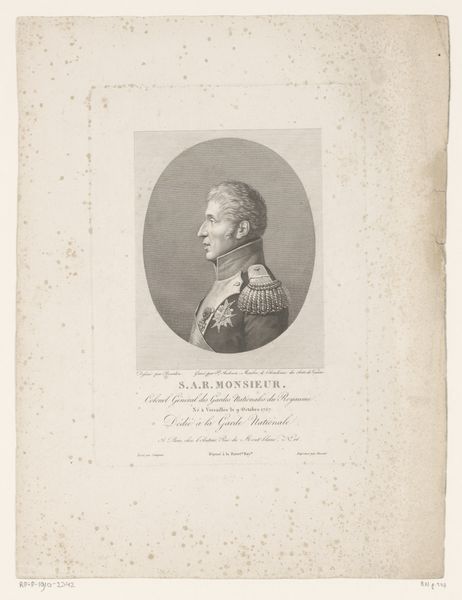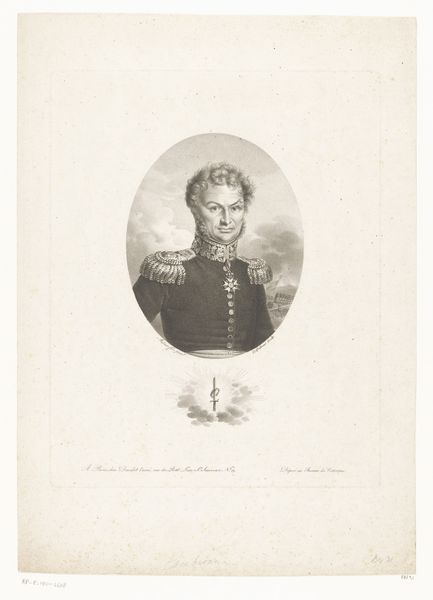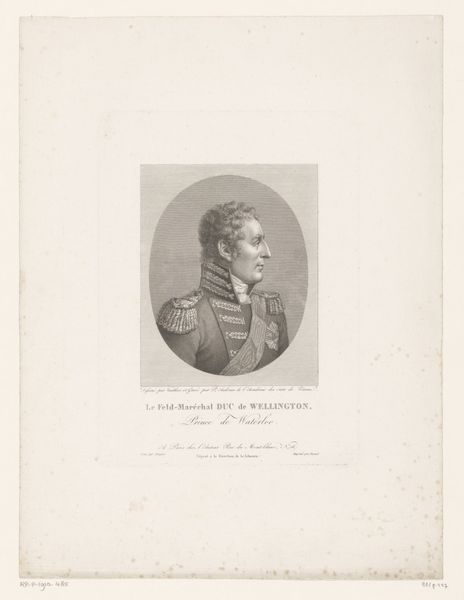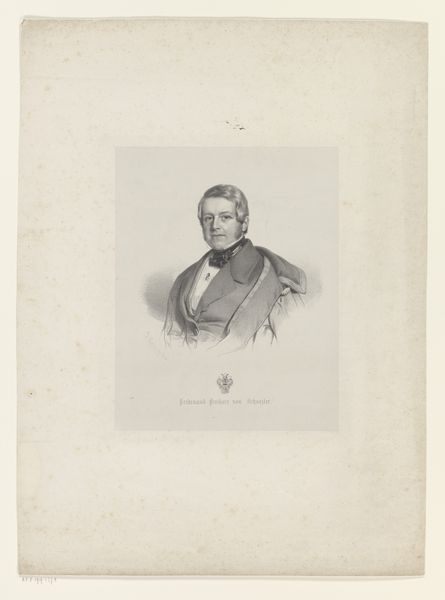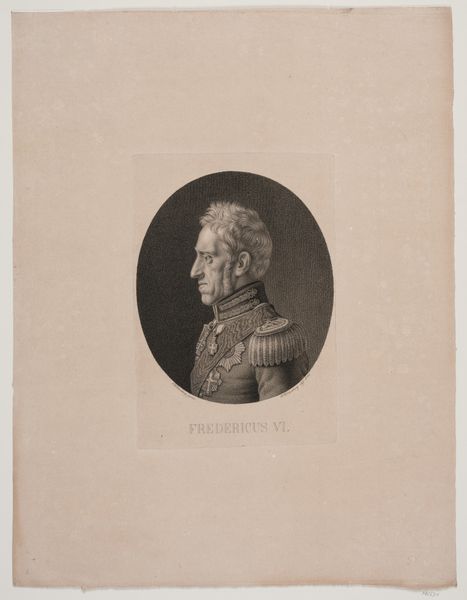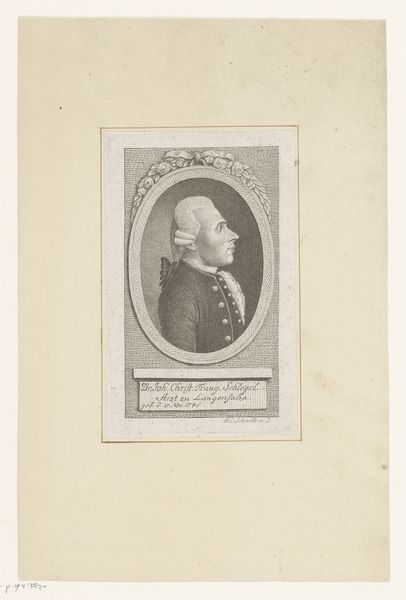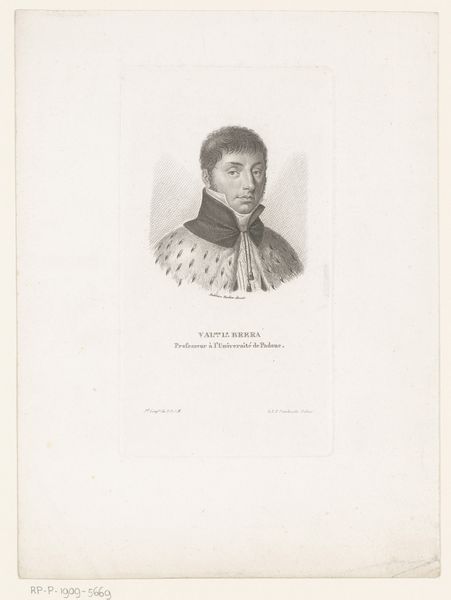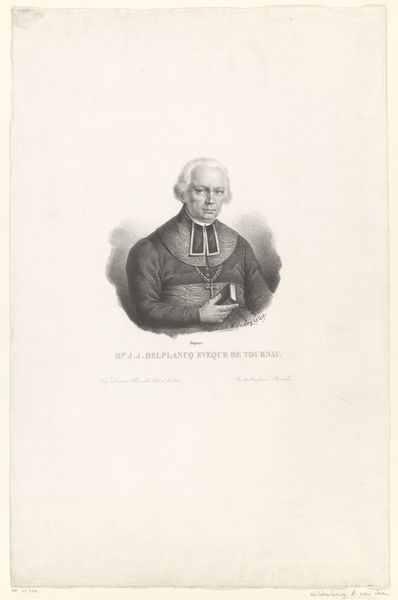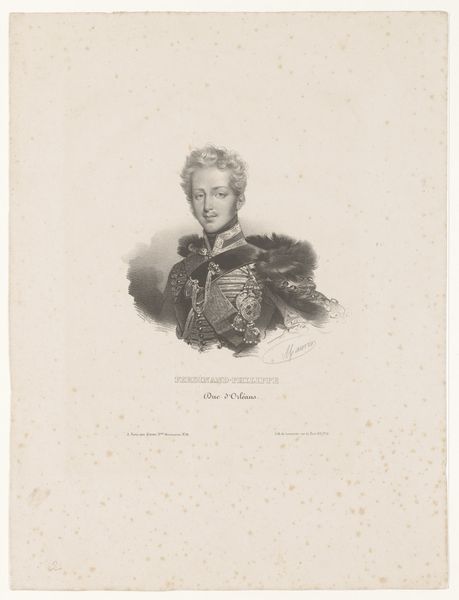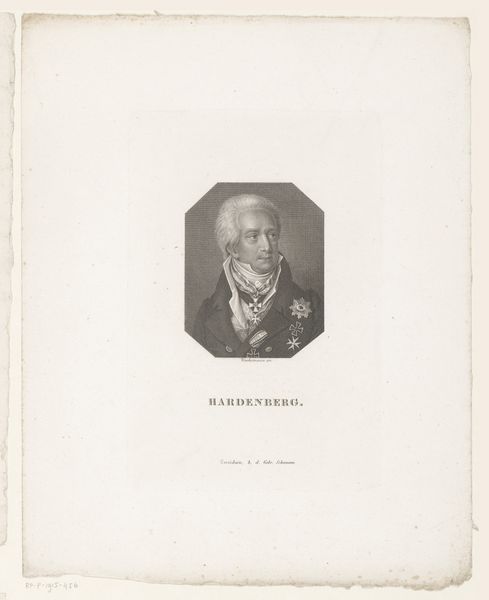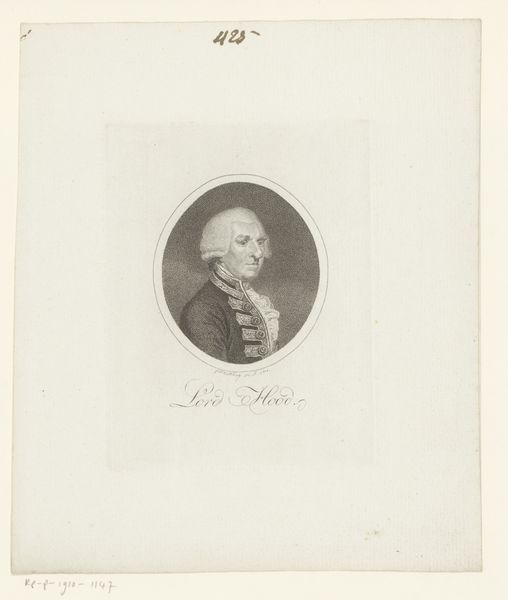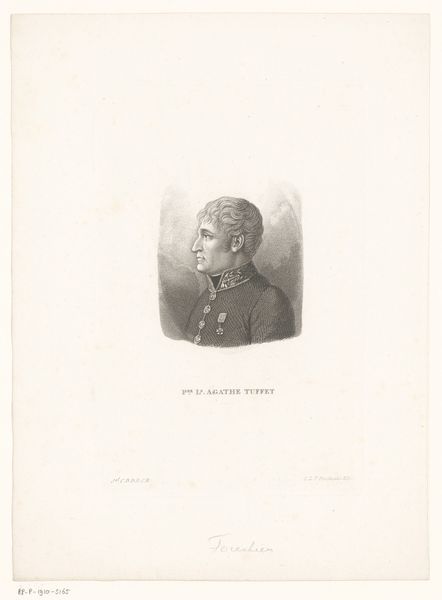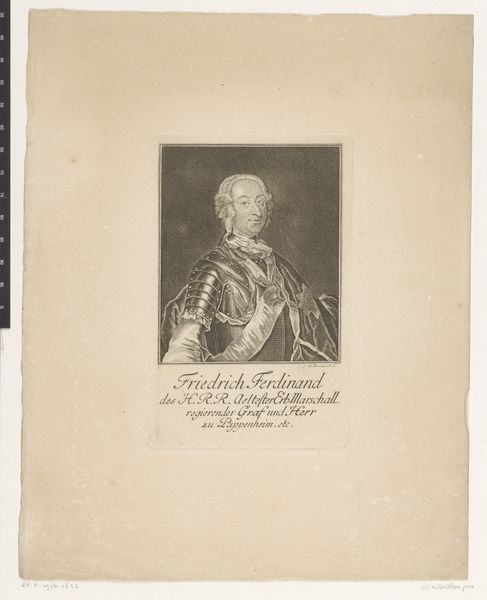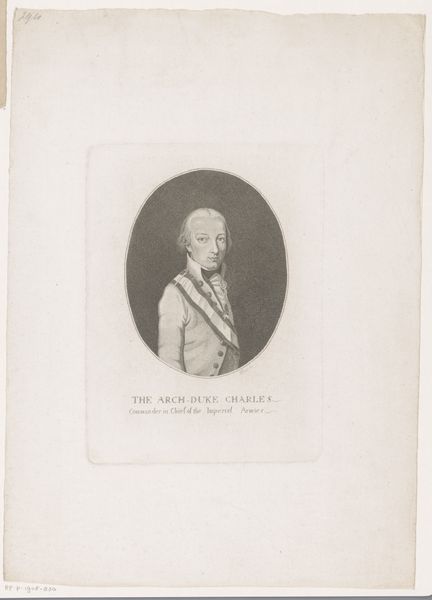
print, engraving
#
portrait
# print
#
old engraving style
#
romanticism
#
history-painting
#
engraving
Dimensions: height 170 mm, width 120 mm
Copyright: Rijks Museum: Open Domain
Curator: This is a portrait of Friedrich Heinrich Ferdinand Emil Kleist von Nollendorf, rendered as an engraving by Carl Schulin in 1840. Editor: My first impression is one of austerity. The monochrome palette combined with the subject's stoic expression gives the artwork a distinctly formal, almost severe mood. Curator: Absolutely, and situating this within the context of 19th-century Prussia helps explain that severity. Kleist von Nollendorf was a significant military figure, his identity intertwined with Prussian militarism. These portraits served as powerful representations of national pride and martial strength. Editor: The lines created in this work contribute to this visual. Take notice how the intricate detail within the braiding across his chest adds to the structure and rigidity. What kind of semiotic weight is being suggested here? Curator: Indeed. The meticulously rendered decorations are visual markers of status, crucial for conveying power. In Schulin's depiction, the visual language of power is overt, especially as the subject embodies concepts of duty, discipline, and honor that were upheld in Prussian society at the time. It's interesting to look at how class and political status were consumed and visualized through this lens. Editor: From a formal standpoint, Schulin masterfully balances detail with the limitations of the engraving medium. Notice how he uses hatching and cross-hatching to create tonal variations and a sense of depth. It’s a skillful manipulation of line to suggest form. Curator: Exactly. But there’s also a conversation to be had about how the romantic ideals of the time influenced portraiture, particularly in conveying national identity. Schulin had a reputation for creating detailed work like this. His prints allowed these concepts of German romanticism to circulate to wider audiences at a time of nascent nationalism. Editor: I hadn't considered how widespread these printed images must have been at that point, carrying social context to more viewers. Seeing its underlying structure and considering it within this historical and theoretical perspective does, in fact, provide much more context than I realized. Curator: Considering that many would encounter Kleist von Nollendorf primarily through images like this allows for an enriched and more complete analysis of visual materials and historical narratives.
Comments
No comments
Be the first to comment and join the conversation on the ultimate creative platform.
